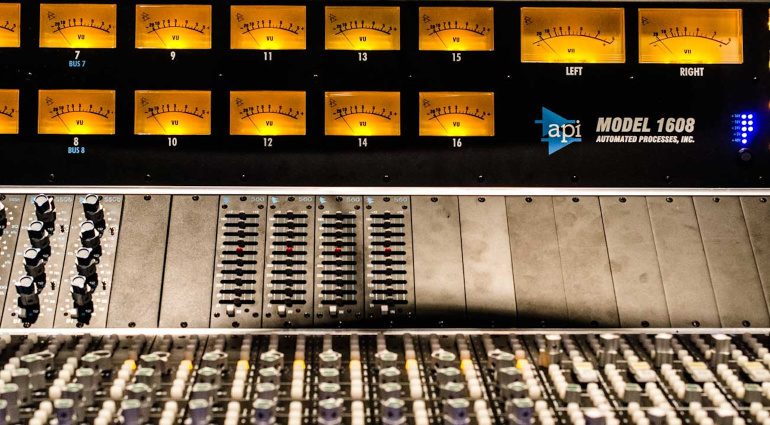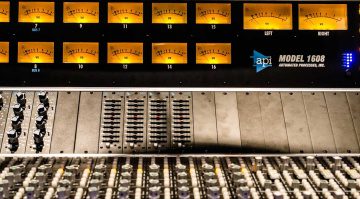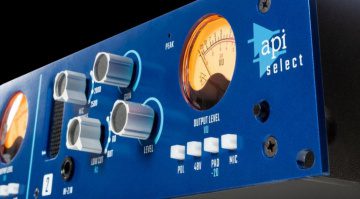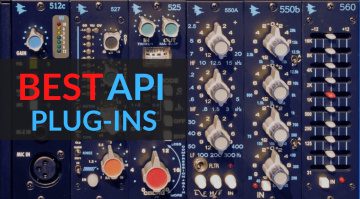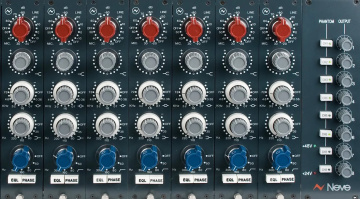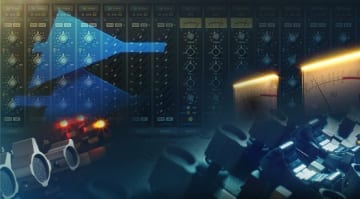The American Sound: The History Of API Audio
A Heavyweight of Recording Innovation.
We look into the History of API Audio, a company responsible for many of the innovations in audio recording that we take for granted today.
API or Automated Processes Inc. was founded by Lou Lindauer and Saul Walker in 1969 in New York City and as a company, went on to become one of the main innovators during what is regarded as the golden age of recording.
The History Of API
From discrete op amps and the first voltage-controlled amplifier designs to the first complete console automation systems, API has had an epic journey within analogue audio.
Shortcuts:
The 2520 Op Amp
In the US Navy, Saul Walker was required to think about the miniaturization of circuits. This led to the development of the legendary 2520 Op Amp that became the basis for API designs.
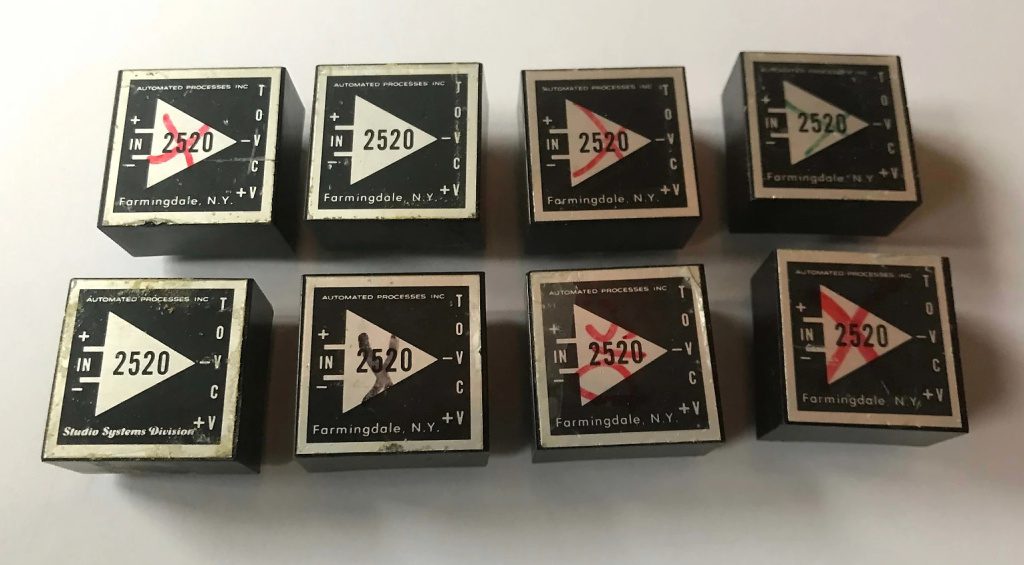
Not only did the 2520 discrete Op Amp allow high gain, high output, and low distortion signal amplification, but it also made the circuit more efficient, robust, and longer lasting.
Used in preamps, equalizers, and compressors, the 2520 was based on the Melcor 1731 from Modular Audio Products. In fact, some of the engineering team behind the 1731 joined forces with Saul Walker and founded API in 1968.
The key aspect of the 2520 is the output buffer transistors that negate its extremely low slew rate of 1.5 V per microsecond. However, the only drawback was that these 2520 Op Amps were not repairable like those in Neve designs.

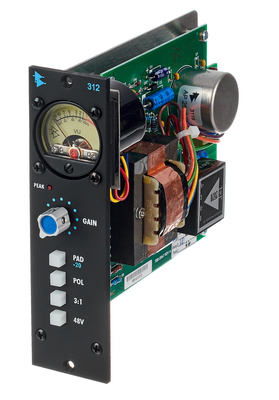



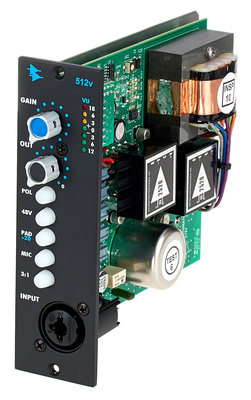
The API Modular Console
Another concept from working with military equipment that had a strong influence on Saul Walker’s designs was the idea of modularity. By breaking down circuit designs into modules, a new degree of flexibility could be achieved through customization.
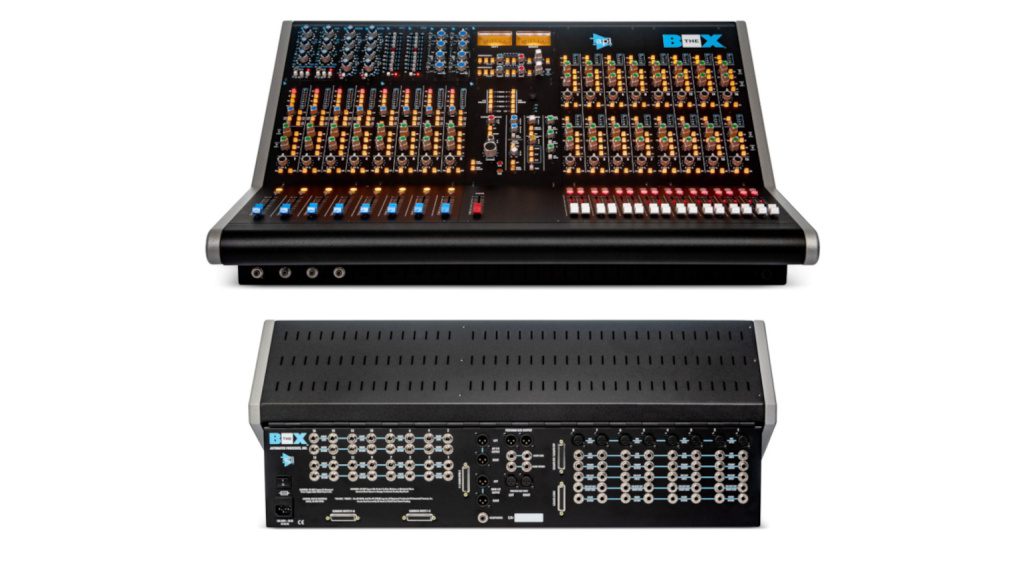
The other advantage of modular designs is when a module fails you can simply swap it out and repair it with minimal downtime. It was in fact, Bill Putnam who pioneered modular console designs, but API took the concept to a new level.
What started as the modular console design within the first API designs, later became the 500-series format that is still widely used in the industry today. It began in 1967, with a 12-channel console built for Apostolic Studios in Greenwich Village, New York.
From there, the first commercial API console design was unveiled at AES in 1969. While this console was sold to Sound Ideas, another early adopter of API consoles, was audio pioneer, Les Paul, in 1970.

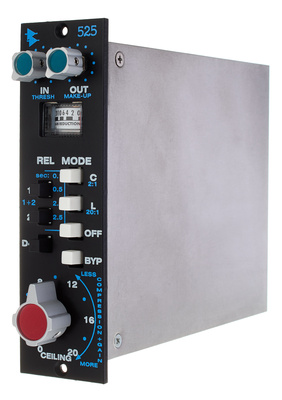
The 550A EQ Module
Although API is equally renowned for the sound of its 312 and 512 microphone preamps, it was the design of the 500 EQ (that became the 550A) that became a hit among engineers and producers.
The 3-band EQ made use of 5 selectable frequency points on each band which made it easy to recall settings. In addition, the unique application of the proportional Q circuit increased the Q-factor as you introduced boosts or cuts.
For example, when boosting a band by 2 dB, the range was 3 octaves, which narrowed to one octave as the boost reached 12 dB. Overall, this gave the equalizer an extremely musical sound, and the user experience was intuitive as you could quickly get to grips with the crucial parts of any signal.
While it was first added to the 500-series in 1971, API began manufacturing the 550A and the 4-band 550b again in 2004, making the beloved EQ units available both in rackmount and 500-series format.

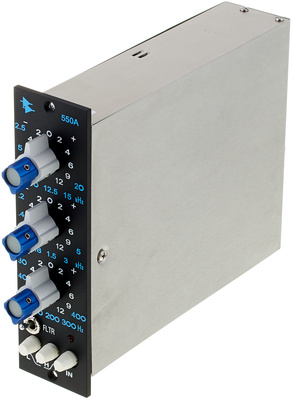

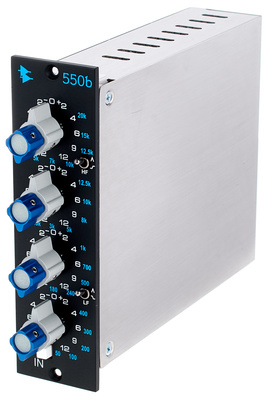

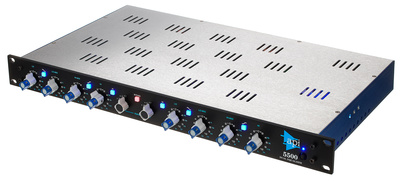
The API Lunchbox
The sound comes from the modules, of course. However, the ability to carry your favourite channel strips from one studio to another in a portable chassis was a mighty contribution when API began manufacturing the lunchbox in 1985.
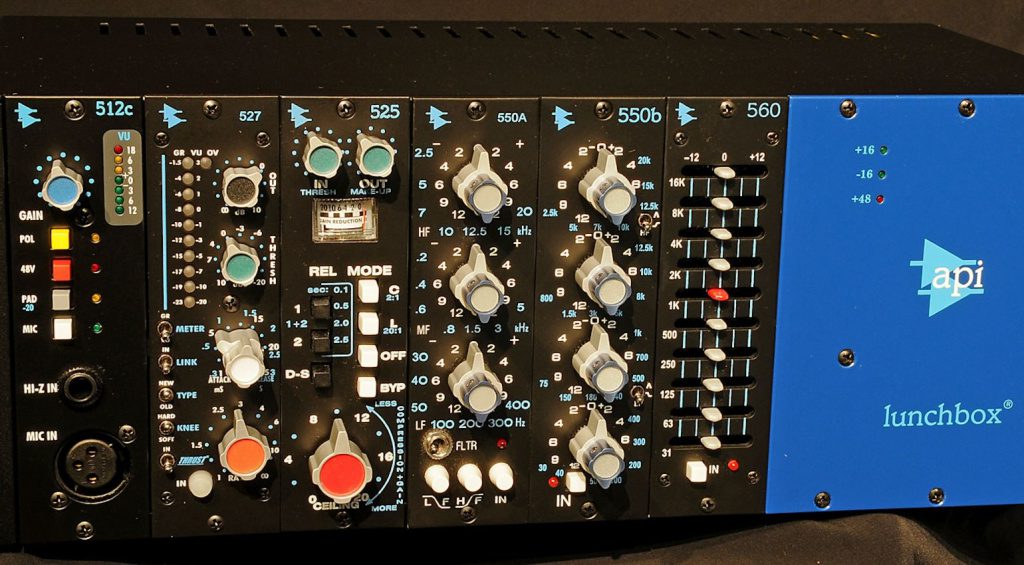
Originally, Datatronix built the first-ever 10-slot 500-series chassis, while Aphex was an early developer of a portable chassis that got the name “lunchbox” as it contained your favourite tools to take to work every day.
While API registered the lunchbox® trademark in 2010, they allowed other manufacturers to build 500-series modules and racks early on. This made the format grow in popularity, as you could mix and match modules to build your ultimate recording channel strips or bus processing chains.
Due to its spacial limitations, 500-series doesn’t offer the same voltage levels supplied within 19-inch rack designs. However, there are still some very impressive tube circuitry modules available from manufacturers like Crane Song.
- More about the 500-series Format

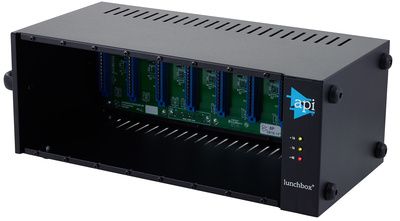

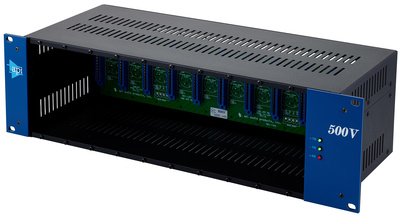
API Today
As a manufacturer, API has always been focussed on the punchy American consoles in an industry that was dominated by the British (Neve, and SSL). However, when Larry Droppa of Audio Toys, Inc. took the company over in 1999, he brought a few new ideas from his background in live sound.
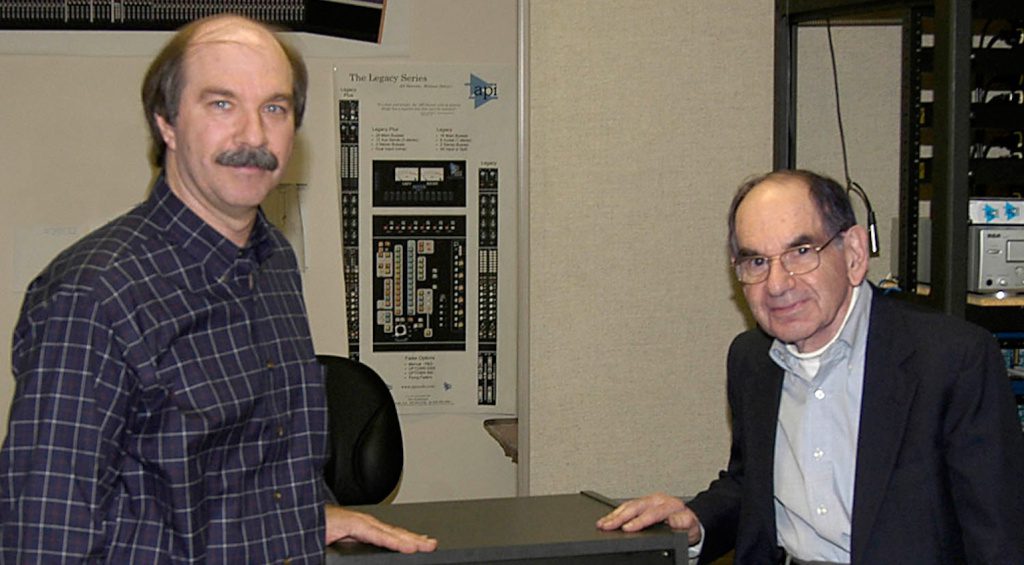
In 2000, the first innovation was the swift introduction of the THRUST circuit into the revered 2500 bus compressor. This meant that the sidechain path could be processed with a high-pass filter to avoid the compressor reacting to volatile low frequencies.
Years later, in 2013, API made another astonishing contribution with THE BOX, its most compact console ever. With a total of 24 summing channels, 8 input channels, and 8 500-series slots, THE BOX offers a great deal of routing flexibility for recording, music production, and mixing workflows.
Throughout its history, API has built its reputation around the incorporation of new technology and consistent quality within analogue audio. Apart from its influence on audio design, API remains one of the most desired brands in recording today.

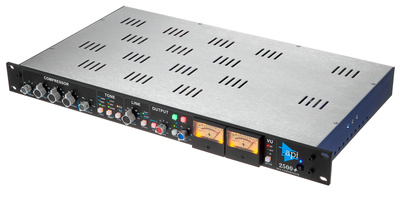
More about the History of API:
- Browse API on Thomann
- Saul Walker interview on NAMM.org
- API Official
- Get the latest API news
- Read about the History of Neve
- Learn about the History of SSL
*Note: This article about the history of API contains affiliate links that help us fund our site. Don’t worry: the price for you always stays the same! If you buy something through these links, we will receive a small commission. Thank you for your support!

 4,4 / 5,0 |
4,4 / 5,0 | 